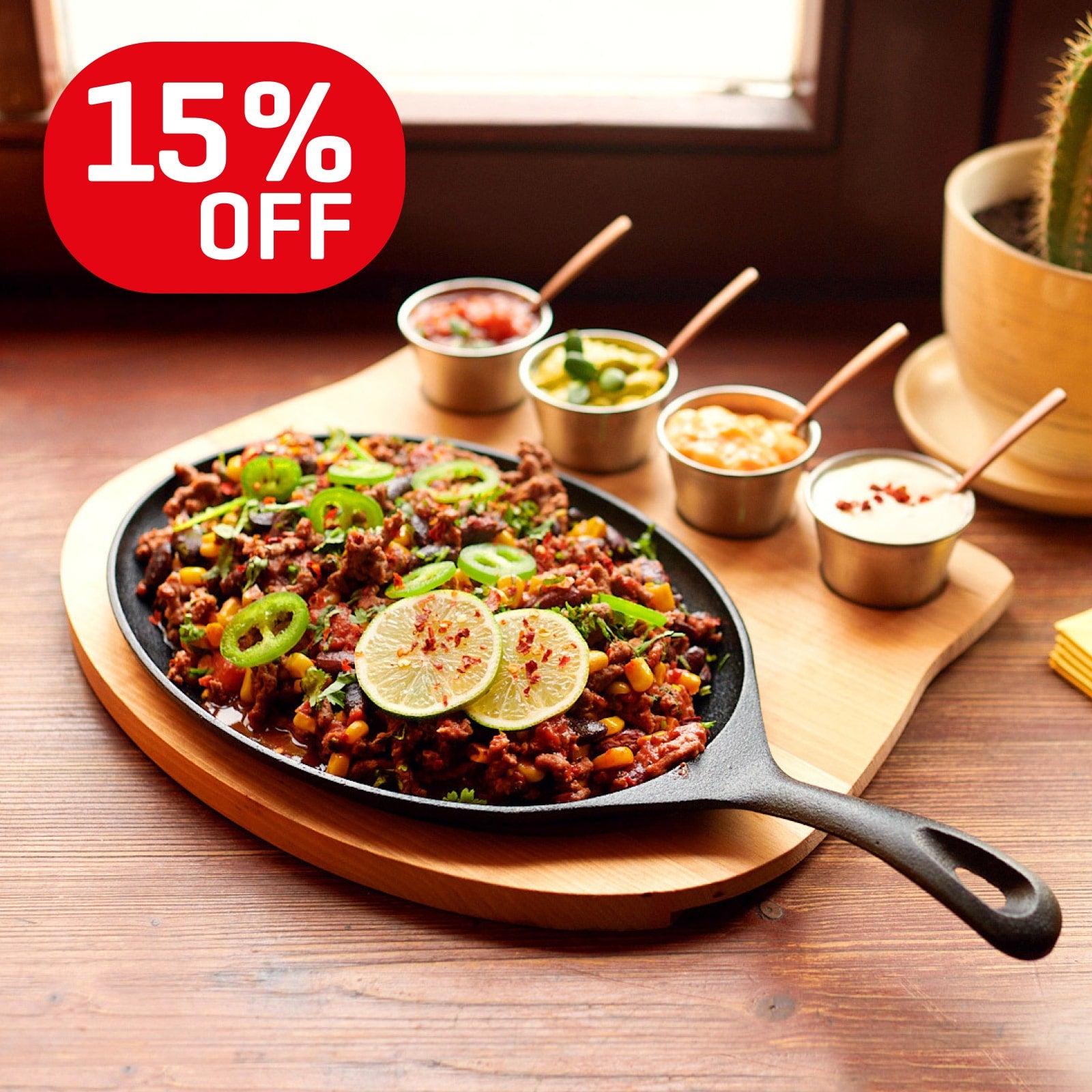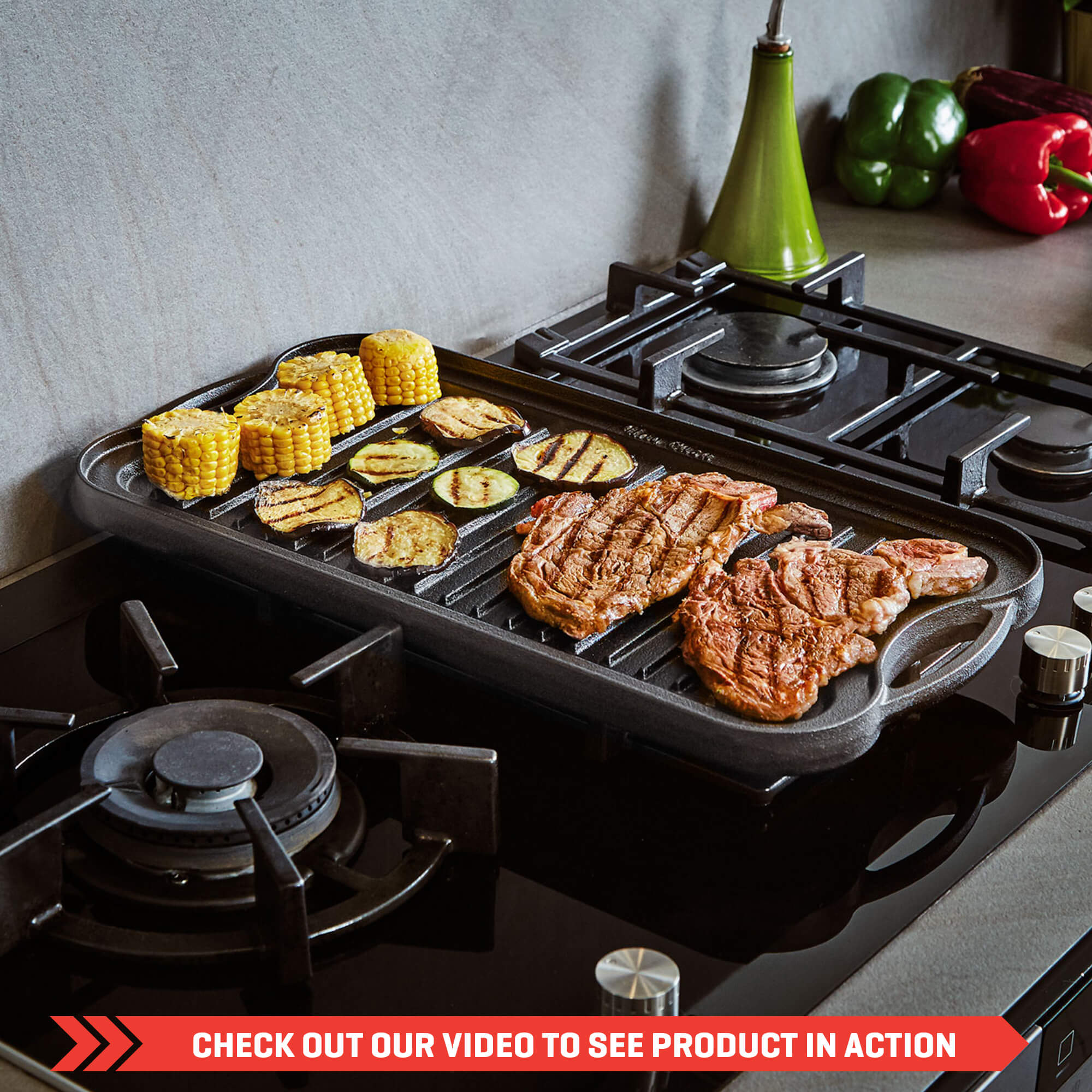We offer free shipping in the US & EU* Learn More

Use the code 15FAJITA at checkout on Amazon
Fall in love with fajitas!
BUY NOW!













In Stock
ARRIVES 28 Apr - 30 Apr, 2024
SORRY! WE’RE OUT OF STOCK
SORRY! WE’RE OUT OF STOCK


1 x reversible cast iron griddle with handle
Material: cast iron
Dimensions: 10 x 20 in
Item weight: 11.35 lb
1 x chainmail cleaner. Keep your cast iron reversible griddle sparkling clean with this handy cleaner. Use it to remove food residue, rinse your griddle with hot water, and towel it dry.
1 x recipe e-book. Packed with mouthwatering recipes created especially for this type of grill griddle, the cookbook will open up an exciting new world of culinary delights. There are so many options to make a range of delicious meals; you may even find that the cast iron flat skillet becomes your go-to cookware!

If you enjoy trying out different types of cookware in your cooking, cast iron griddle pan cooking will blow your mind! And it's easier than you may think. Using a grill griddle pan is far from rocket science. Here's a basic guide:
Our griddles are pre-seasoned, so no need to prepare it; you can start cooking straight away!
Use the smooth side to fry eggs or cook pancakes.
The smooth side also makes a perfect cast iron flat top grill for hamburgers!
The ridged griddle-side is excellent for perfectly seared steaks, crisping up fish skin, or grilling vegetables.
Whether you have an electric stove or prefer open flame cooking with gas or a campfire, it will work with cast iron griddles. For gas stoves or using it as a camping stove griddle plate, don't worry about the open flames on your pan, the material is heat-resistant. So no matter how much heat you throw at them, these cast iron grill skillets can take the punch!
The chainmail cleaner included makes cleaning cast iron griddles super simple. Use it to scrub off any food residue, rinse with hot water, and towel dry.
How to season cast iron griddle for grill
Before storing your stove top griddle pan, it's important to season it. This will keep it rust-free and in good condition. It will also help keep the non-stick surface effective, here's how:
Apply a thin layer of oil with a paper towel.
Spread this evenly across the cast iron reversible grill griddle on both sides.
Bake the cooktop griddle plate in the oven for approximately an hour at 375°F.
If you season cast iron grills by using this simple method regularly, they'll last a lifetime! Some families even pass these pans down generation after generation.
